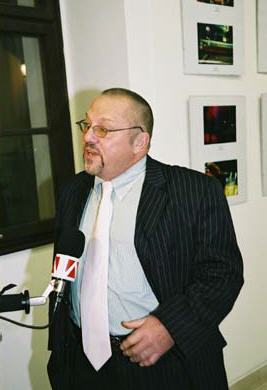Related Research Articles

A creole language, or simply creole, is a stable natural language that develops from the process of different languages simplifying and mixing into a new form, and then that form expanding and elaborating into a full-fledged language with native speakers, all within a fairly brief period of time. While the concept is similar to that of a mixed or hybrid language, creoles are often characterized by a tendency to systematize their inherited grammar. Like any language, creoles are characterized by a consistent system of grammar, possess large stable vocabularies, and are acquired by children as their native language. These three features distinguish a creole language from a pidgin. Creolistics, or creology, is the study of creole languages and, as such, is a subfield of linguistics. Someone who engages in this study is called a creolist.

Creole peoples may refer to different ethnic groups around the world. The term has been used with various meanings, often conflicting or varying from region to region.

Asia, comprising different language families and some unrelated isolates. The major language families include Austroasiatic, Austronesian, Caucasian, Dravidian, Indo-European, Afroasiatic, Turkic, Sino-Tibetan and Kra–Dai. Most, but not all, have a long history as a written language.
Patois is speech or language that is considered nonstandard, although the term is not formally defined in linguistics. As such, patois can refer to pidgins, creoles, dialects or vernaculars, but not commonly to jargon or slang, which are vocabulary-based forms of cant.
Papiamento or Papiamentu is a Portuguese-based creole language spoken in the Dutch Caribbean. It is the most widely spoken language on the Caribbean ABC islands, with official status in Aruba and Curaçao. Papiamento is also a recognised language in the Dutch public bodies of Sint-Eustatius and Saba.

A Spanish creole, or Spanish-based creole language, is a creole language for which Spanish serves as its substantial lexifier.

Portuguese creoles are creole languages which have Portuguese as their substantial lexifier. The most widely-spoken creoles influenced by Portuguese are Cape Verdean Creole, Guinea-Bissau Creole and Papiamento.
Language contact occurs when speakers of two or more languages or varieties interact with and influence each other. The study of language contact is called contact linguistics. When speakers of different languages interact closely, it is typical for their languages to influence each other. Language contact can occur at language borders, between adstratum languages, or as the result of migration, with an intrusive language acting as either a superstratum or a substratum.

The Guianas, sometimes called by the Spanish loan-word Guayanas, is a region in north-eastern South America which includes the following three territories:

Ian Francis Hancock is a linguist, Romani scholar and political advocate. He was born and raised in England and is one of the main contributors in the field of Romani studies.
In linguistics, relexification is a mechanism of language change by which one language changes much or all of its lexicon, including basic vocabulary, with the lexicon of another language, without drastically changing the relexified language's grammar. The term is principally used to describe pidgins, creoles, and mixed languages.
Fernandinos are creoles, multi-ethnic or multi-racial populations who developed in Equatorial Guinea. Their name is derived from the island of Fernando Pó, where many worked. This island was named for the Portuguese explorer Fernão do Pó, credited with discovering the region.

A French creole, or French-based creole language, is a creole for which French is the lexifier. Most often this lexifier is not modern French but rather a 17th- or 18th-century koiné of French from Paris, the French Atlantic harbors, and the nascent French colonies. This article also contains information on French pidgin languages, contact languages that lack native speakers.
West African Pidgin English, also known as Guinea Coast Creole English, is a West African pidgin language lexified by English and local African languages. It originated as a language of commerce between British and African slave traders during the period of the transatlantic slave trade. As of 2017, about 75 million people in Nigeria, Cameroon, Ghana and Equatorial Guinea used the language.
This page is a list of lists of languages.
Para-Romani are various mixed languages of non-Indo-Aryan linguistic classification containing considerable admixture from the Romani language. They are spoken as the traditional vernacular of Romani communities, either in place of, or alongside, varieties of the Romani language. Some Para-Romani languages have no structural features of Romani at all, taking only the vocabulary from Romani.

The languages of the Caribbean reflect the region's diverse history and culture. There are six official languages spoken in the Caribbean:

Mauritian Creole or Morisien is a French-based creole language spoken in Mauritius. English words are included in the standardized version of the language. In addition, the slaves and indentured servants from cultures in Africa and Asia left a diverse legacy of language in the country. The words spoken by these groups are also incorporated into contemporary Morisien.
References
- ↑ Holm, J.A. (1989). Pidgins and Creoles: Volume 2, Reference Survey. Cambridge University Press. p. 357. ISBN 9780521359405 . Retrieved 2015-03-02.
- 1 2 with variants ap and pe, from the koiné French progressive aspect marker àprè <après> Henri Wittmann. 1995, "Grammaire comparée des variétés coloniales du français populaire de Paris du 17e siècle et origines du français québécois", in Fournier, Robert & Wittmann, Henri, Le français des Amériques, Trois-Rivières: Presses universitaires de Trois-Rivières, pp. 281–334.
- ↑ from the Karipúna substratum (Henri Wittmann. 1995, "Grammaire comparée des variétés coloniales du français populaire de Paris du 17e siècle et origines du français québécois", in Fournier, Robert & Wittmann, Henri, Le français des Amériques, Trois-Rivières: Presses universitaires de Trois-Rivières, pp. 281–334.
- ↑ Partridge, Eric (1937) Dictionary of Slang and Unconventional English